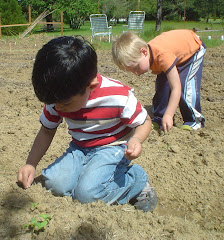...and how to grow and process sunflowers for birdseed and sprouts.
 |
| Sunflower Pollen - Pro-"bee"-otics for Bees!. |
In reading an issue of National Wildlife recently, we came across an article about the health benefits to bees of sunflower pollen. With populations of many bees on the decline, they need all the help they can get! Apparently sunflower pollen reduces the infections of some varieties of bees from two widespread parasites. Previous research had "linked both types of parasites with slower colony growth and greater mortality rates". Scientists compared the effects of sunflower pollen with other "monofloral" pollens, from different types of flowers - (sunflowers are "multi-floral") and "none of the other pollens had the same effect".
But, "while sunflower pollen may provide (the above mentioned) medicinal benefits, it is low in protein and some amino acids," say researchers in Scientific Reports. They conclude that sunflowers should be supplements rather than the main source of the insect's diet. "Bees do best," the scientists point out, "when they have access to a variety of flowers". *Source below.
 |
| A border-row of Mammoth Russian sunflowers. |
Sunflowers are one of our favorites. They're beautiful and easy to grow. They provide wonderful pollen for insects and home-grown bird-seed for our feathered friends. And, the seeds can be used to grow delicious, nutritious sprouts for winter greens.
Planting Sunflowers - direct seeding: Sunflowers can be directly sown, a few weeks before the expected last hard freeze (a light frost won't bother them). Push them into soil about 1/2" - 1" deep. If you have jays or crows in your neighborhood, you might need to cover the starts with row-cloth or some other protector until they're rooted as birds do love the seeds and, if they watch you planting, they may wait till you're not looking and dig them up (we've had this happen to us in the past). In order to avoid this problem, we usually start our sunflowers in pots and transplant later.
When you are ready to transplant outside, put plants outside your greenhouse for 5-10 days so plants are "hardened-off by exposure to wind and cooler nights before you put them in the ground.
 |
| Plant 'starts' in the greenhouse. Zucchini plants in foreground. |
Placement: If you plant a whole row of them, keep in mind that they will shade smaller plants, and block overhead sprinklers for watering. We almost always plant ours along the edges of garden beds so they get watered along with our other crops.
Watering: Sunflowers, if planted early enough that they can follow the water-table downwards through the summer, they can do well without much supplemental watering. Beware of over-watering as they can grow too fast, get top-heavy and fall over.
Staking: The tall varieties of sunflowers will almost certainly need staking.
Sometimes we'll drive an individual stake in the ground next to them; a 4'-6' metal stake is best. Drive it deep into the ground. Tie sunflowers to stakes with cotton strips.
Sometimes we'll erect a bamboo tri-pod and tie two, to three sunflowers to each one.
We've also grown sunflowers in long rows between tall stakes with heavy wire run between them. Attach wires at 3' and 6' heights and tie sunflowers to them with cotton strips.
Sunflowers can also be tied to fences with cotton strips to keep them from toppling.
 |
| A bean-tipi (with scarlet-runner beans) and Mammoth Russian sunflowers growing beside it. They are each tied to a separate 4-foot wooden stake. |
Varieties of sunflowers we like: Most years we just grow two varieties of sunflowers: Mammoth Russians and Autumn Beauties. The Mammoth Russians make good bird-seed for bluejays and other large seed-eating birds, and they are also great for growing sprouts, a delicious and nutritious source of winter "greens" (LINK to post on growing sunflowers sprouts). They can get extremely large (10' or higher) and will usually require staking so they don't topple in the wind when their heads are heavy with seed.
 |
| Mammoth Russian sunflowers can grow huge! You can see why it's important to stake them so the don't fall over when they're heads are full of ripe seeds. |
 |
| Autumn Beauty sunflowers...So beautiful against a blue, autumn sky! A favorite for bees and birds alike. |
When to harvest seed: If you're just growing the flowers for their beauty and you don't care about saving the seed, you can leave them standing for as long as you like, well into the winter. Birds enjoy them for winter perches and will happily eat the seeds right off the heads. But, if you wish to save seed to feed them later in the winter when natural forage is harder to find, here's how to do it:
Processing the seed: As autumn approaches, it is important to regularly monitor the ripeness of the seed. Sunflowers ripen from the edges in towards the center. Periodically pull a seed out and crack it open to see if the seed inside is fully formed. Notice if the birds are starting to eat them. If the birds are starting to eat them but they're still not ripe most of the way to the center, we sometimes cover the heads with a paper sack or a mesh onion-bag.The onion-bag is preferable because it allows the pollinators to continue to have access to the less-ripe seeds and more of them will be pollinated.
 |
| Onion-bags are great to protect seeds you're saving from being eaten by wild-life, or fruit from being harvested before the seeds are ripe. (Pictured: green-peppers ripening for seed). |
 |
| Llyn, laying Autumn Beauty sunflower heads face-down (to protect from birds) to dry. |
 |
| To remove seeds from head, use your thumbs to rub them into a tray. |
 |
| Processing sunflower seeds is a favorite autumn task. (Crates of Delicata squash in the background.) |
 |
| Even young people enjoy this quiet meditative task. |
Feeding the birds: Autumn Beauties: Just put whole heads out on your table-feeders, or string them on a wire between two posts or trees.
Mammoth Russians: We buy millet in the bulk-food section and mix it with the sunflower seeds and put it on a table-feeder or directly on the ground.
 |
| Chickadees love sunflower seeds! (Photo credit: www.wallpaperup.com/45606/sunflowers_1920x1200_wallpaper_Animals_Birds) |
 |
| Sunflower sprouts for winter "greens". You'll need a sunny window or greenhouse but their delicious, sweet, nutty taste and high nutrient-content are worth it! |
Hopefully this post will inspire you to add some sunflowers to your summer garden. These glorious plants have given us much pleasure and they're sure to please you too!
* Source: National Wildlife - Feb/March 2019, p 8.





































